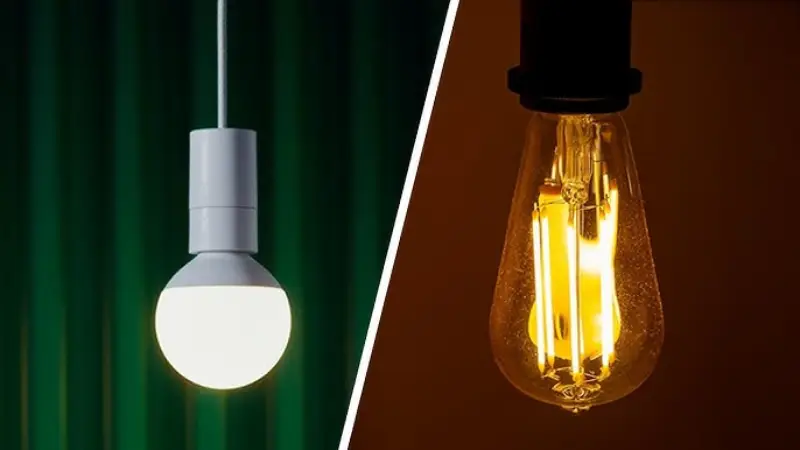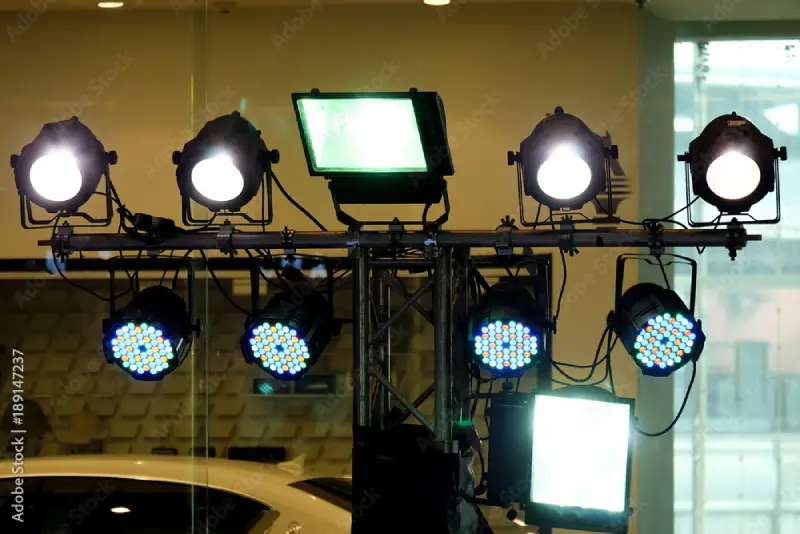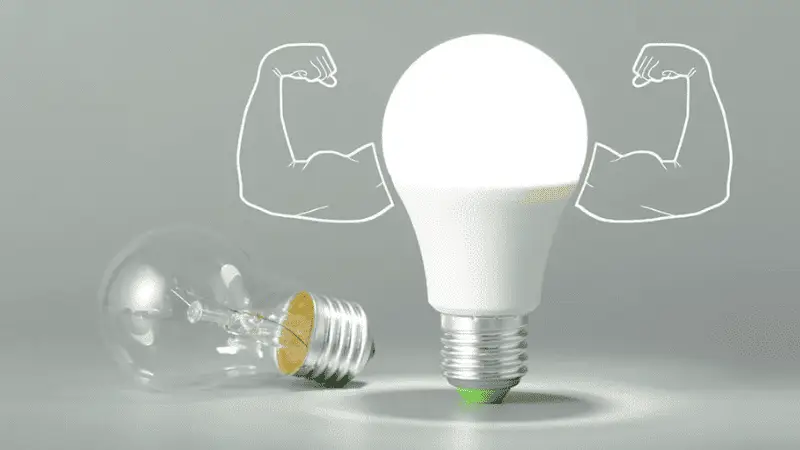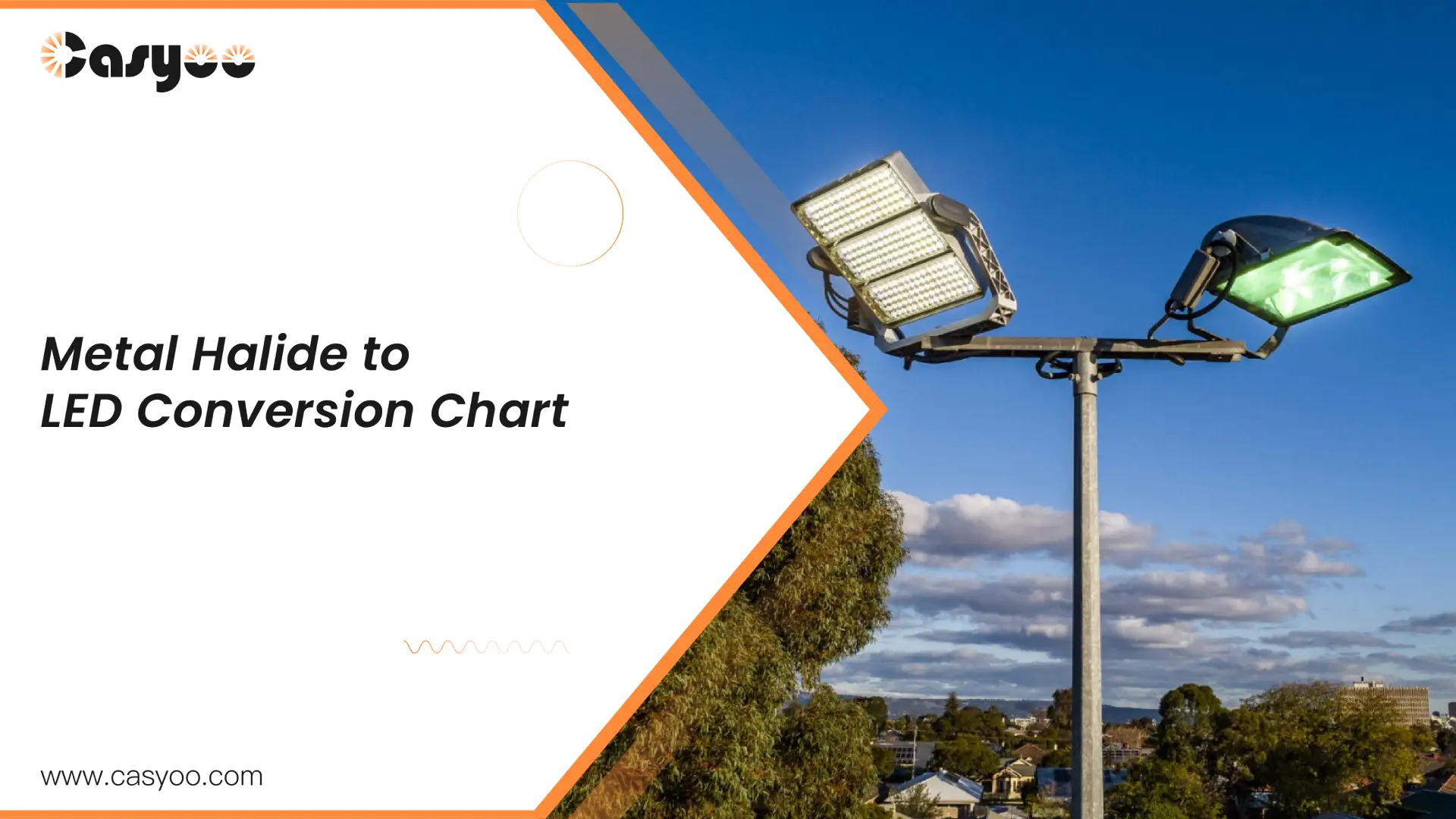LED lights have advantages such as high efficiency, long lifespan, environmental friendliness, high color rendering, instant illumination, and diverse designs, making them the mainstream light source in the market. In many usage scenarios, many traditional light sources are gradually being replaced by LED lights.
LED Light to Metal Halide Light Wattage Conversion Chart
Halogen metal halide lights were once one of the mainstream light sources in the market, and also made great contributions to human lighting, bringing light to people in the dark. Due to the development of technology, the various indicators of LED lights are ahead of metal halide lamps. The original metal halide lights are gradually being replaced by LED lights, both indoors and outdoors, such as street light and grow light. The table below provides information on the power substitution between metal halide lights and LED lights.
| LED Light vs Other Light Wattage Conversion Chart | ||||
| Metal Halide or HPS(w) | LED(w) | CFL(w) | Incadesecant(w) | Lumens(lm) |
| 100 | 30 | 65 | 250 | 4000 |
| 125 | 40 | 80 | 300 | 4800 |
| 150 | 50 | 100 | 400 | 6000 |
| 175 | 60 | 125 | 450 | 7000 |
| 250 | 75 | 150 | 500 | 8000 |
| 320 | 100 | 175 | 600 | 10000 |
| 400 | 135 | 300 | 1000 | 16000 |
| 750 | 275 | 500 | 2000 | 30000 |
| 1000 | 300 | NA | NA | 40000 |
| 1500 | 450 | NA | NA | 60000 |
| 2000 | 600 | NA | NA | 80000 |
The Difference between Metal Halide Light and LED Light

Many people say that metal halide lights are an upgraded version of incandescent lamps, while LED lights are the high-tech lighting fixtures of the new era, thousands of times better than metal halide lightps. Is that really the case? What is the difference between them? Let’s take a look from multiple perspectives below.
The Principle is Different
A metal halide light is a discharge light that operates on an AC power source and emits light through arc discharge in a mixture of mercury and rare metal halides. Structurally similar to a mercury lamp, but in addition to mercury and argon gas, there are other halogenated metal compounds as luminescent substances in the luminous tube. By using these elements to emit light, it can be said that the efficiency and color of a high-pressure mercury lamp are improved from the inside of the luminous tube, making it a high-pressure discharge lamp. The core of LED lights is the light-emitting diode. The principle of luminescence is that a light-emitting diode will excite photons to radiate energy outward when it is powered on, resulting in luminescence.
Different Light Effects
The so-called luminous efficiency refers to the ratio of the luminous flux emitted by a light source to the power consumed, also known as luminous efficiency, measured in lm/w. Metal halide lights use high voltage to excite metal gas. In addition to emitting light, a small portion of the input power is consumed in the circuit, and a large portion is converted into heat energy. Metal halide lights, also known as thermal light sources, have relatively low light efficiency, generally around 40lm/w. LED lights emit light through photons excited by the recombination of electrons and holes. Therefore, when LED lights are in operation, all other power is used to emit light, except for the heat generated by the circuit. Also known as a cold light source, it has higher light efficiency compared to a hot light source. Usually around 140lm/w.
Different Spectra

Due to the fact that metal halide lights are thermal light sources, their emitted spectra follow blackbody radiation. The spectral continuity is very good, with a color rendering similar to that of sunlight. And its color temperature is generally around 3000K+, belonging to warm tones. To the naked eye, it gives a warm and comfortable feeling. At the same time, due to the effect of Rayleigh scattering, light with lower color temperature has stronger penetration in rainy, foggy, and dusty weather.
LED lights belong to cold light sources, which emit blue light through a chip that excites the yellow fluorescent powder coated on the chip, and then mixes with some excess blue light to form white light. This spectral continuity is not as good, and the color temperature is generally around 6500K. It looks very bright to the naked eye, but also very dazzling. This is also the reason why car LED high beams are often seen on the road and are very glaring.
Different Lifespans
Metal halide lights are not afraid of heat, but their lifespan and luminous efficiency are closely related. If we want to improve the luminous efficiency, the lifespan of metal halide lamps will decrease. A metal halide lamp with normal luminous efficiency generally has a lifespan of about 2000 hours, while the long-life version can reach a lifespan of 5000 hours. The high-efficiency version has a much shorter lifespan.
The lifespan of LED lights is different, as it has little to do with light efficiency. Basically, it is the lifespan of light-emitting diodes. Currently, light-emitting diodes on the market generally have a lifespan of 50000 hours, which is tens of times higher than the longer lifespan versions of metal halide lights. However, the lifespan of LED lights will decrease as the operating temperature increases. So, LED lights must do a good job of heat dissipation to ensure that the heat generated by the driving circuit is dissipated in a timely manner.
Different Costs
Metal halide lights are very affordable due to their simple structure, cheap materials, and mature technology. However, LED lights are different. To achieve good quality, the cost of LED chips, heat dissipation, and driving circuits is relatively high. So, the price will also be much more expensive than metal halide lamps.
In general, metal halide lights belong to thermal light sources and have a more continuous spectrum and lower color temperature compared to LED lights. So, it has stronger penetration and appears warmer and more comfortable to the human eye. At the same time, the price is also cheap. LED belongs to cold light sources and has higher luminous efficiency and longer service life compared to metal halide lamps.
Why Replace Metal Halide Light with LED Light
LED Lights are More Energy-Efficient
In various markets, LED has been replacing traditional lighting fixtures, which is the trend. LED lights are more energy-efficient compared to other traditional lighting fixtures, and can even save more than 80% energy compared to some traditional lighting fixtures. The lighting market is very large, and human lighting also consumes a lot of energy every year. If these lamps are replaced with LED lights, it can save a lot of energy, reduce carbon dioxide consumption, and effectively slow down the pace of global warming.
LED Lights are More Environmentally Friendly

Compared to metal halide lights, LED lights emit less radiation and generate much less heat during their emission process. Additionally, the spectrum of LED lights does not use ultraviolet or infrared radiation, making their emission process less environmentally friendly and less harmful. Compared with metal halide lights, LED lights do not contain metal compounds such as mercury inside, making them more environmentally friendly and having a smaller impact on the environment when recycled or discarded.
LED is Easier to Integrate with the Latest Technology
The LED beads are semiconductors that emit light when powered on and turn off when powered off. They do not require high voltage or preheating. This allows LED light sources to be better integrated with other technologies. The lighting used in smart homes is mostly LED lights, which can be easily remotely controlled through communication technologies such as Bluetooth, WiFi, ZigBee, etc. LED lights combined with IoT related technologies can achieve functions such as mobile phone control and timed switching.
Low Maintenance Cost for LED Lights
LED has high luminous efficiency, which can greatly reduce energy consumption and electricity bills. Moreover, LEDs and other materials have a longer lifespan, more than 10 times that of metal halide lights, which can greatly reduce purchase and installation costs. The maintenance cost of LED is lower, and in the long run, using LED lights costs less.
LED Lighting Fixtures are More Diverse and Colorful
Compared to metal halides, which have a single light source and almost no color control space. But LED lighting fixtures are different. By using different combinations of the three primary colors of red, green, and blue, up to 16777216 different color variations can be generated, forming combinations of different light colors. It can achieve ever-changing light and shadow effects in different application scenarios.




